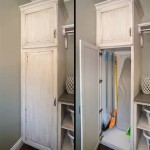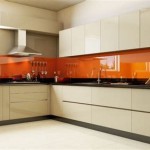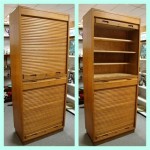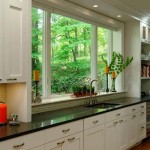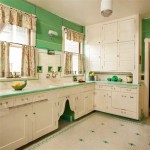What Is The Most Popular Kitchen Cabinet Color For 2024?
Determining the most popular kitchen cabinet color for any given year requires analyzing current trends, considering consumer preferences, and reviewing data from design professionals and industry reports. Several factors contribute to the popularity of specific colors, including evolving aesthetic styles, technological advancements in paint and materials, and even broader cultural influences. For 2024, while no single color dominates across all markets, a strong contender for most popular would be a nuanced category rather than a specific hue: updated and sophisticated neutrals, particularly variations of white, grey, and greige, alongside a growing embrace of natural wood tones.
The persistence of neutral kitchen cabinetry stems from its versatility and timeless appeal. Neutral colors provide a blank canvas, allowing homeowners to easily integrate other design elements, such as countertops, backsplashes, and hardware, without creating a visually overwhelming space. Furthermore, neutral cabinets offer exceptional resale value, as they appeal to a wider range of potential buyers compared to more daring or trend-specific color choices.
While pure white remains a classic option, the trend in 2024 leans towards warmer, softer whites that avoid appearing stark or clinical. These warmer whites often incorporate subtle undertones of cream, beige, or even grey, creating a more inviting and comfortable atmosphere. This shift reflects a broader desire for homes that feel cozy and welcoming, rather than sterile and impersonal.
Grey continues to be a significant player in kitchen cabinet color trends, evolving from the cooler, more industrial shades of previous years to warmer, more complex grey tones. "Greige," a blend of grey and beige, has gained considerable traction, offering a sophisticated neutral that complements both warm and cool color palettes. These greige tones provide a grounding presence in the kitchen, adding depth and dimension without being overly assertive.
Beyond neutrals, there's a noticeable increase in the popularity of natural wood tones for kitchen cabinetry. This reflects a growing appreciation for organic materials and a desire to connect with nature within the home. Light and medium-toned woods, such as white oak, maple, and birch, are particularly popular, creating a bright and airy feel that contrasts with the painted cabinetry trend. These wood tones can be used for entire cabinet sets or incorporated as accent elements, such as islands or accent drawers.
The interplay between painted cabinets and natural wood elements is a key design trend for 2024. This approach allows homeowners to introduce visual interest and texture into the kitchen without committing to a single dominant color or material. For example, a kitchen might feature white cabinets along the perimeter with a natural wood island, or vice versa.
The finishing details also play a crucial role in determining the overall aesthetic of kitchen cabinets. Matte finishes are increasingly favored over high-gloss options, providing a softer, more sophisticated look. Matte finishes also tend to be more forgiving of fingerprints and smudges, making them a practical choice for busy kitchens.
Hardware choices further enhance the chosen cabinet color. Brass and gold hardware continue to be popular, adding a touch of warmth and luxury to both neutral and colored cabinets. Black hardware provides a more modern and contrasting look, particularly when paired with white or light-colored cabinets. The selection of hardware is critical to ensuring the cabinets align with the desired aesthetic of the kitchen.
Key Point 1: The Enduring Appeal of Sophisticated Neutrals
The continued popularity of neutral kitchen cabinets, particularly whites, greys, and greiges, is driven by several factors. Functionally, neutrals offer a versatile backdrop that allows for seamless integration of various design elements. Practically, neutral cabinets maintain their appeal over time, contributing to the resale value of the home. Aesthetically, modern neutral palettes offer updated takes on classics, avoiding the harshness of stark white and the coldness of industrial grey. The new focus is on warmth, depth and subtle variations such as cream, beige, or soft greige undertones.
The adaptability of neutral cabinets allows for easy updates and changes to the kitchen's overall style over time. For example, a homeowner can easily swap out the backsplash or hardware to refresh the look of the kitchen without having to replace the cabinets. This long-term flexibility makes neutral cabinets a smart investment for homeowners who want to maintain a stylish and functional kitchen for years to come.
Furthermore, the widespread availability of neutral-colored cabinets makes them a readily accessible choice for homeowners of all budgets. Many manufacturers offer a wide range of neutral cabinet styles and finishes, making it easy to find an option that fits both the aesthetic preferences and the financial constraints of the homeowner. This accessibility contributes to the continued popularity of neutral cabinets in the market.
The versatility of neutral color palettes also allows homeowners to experiment with other design elements in the kitchen, such as bold countertops, vibrant backsplashes, or eye-catching lighting fixtures. By providing a neutral foundation, the cabinets allow these other elements to take center stage, creating a visually dynamic and engaging space.
The choice of neutral cabinet color is therefore not simply a matter of following a trend, but rather a strategic decision that allows homeowners to create a kitchen that is both stylish and functional, as well as easily adaptable to changing tastes and preferences. The enduring appeal of sophisticated neutrals is a testament to their versatility and timelessness, making them a perennial favorite for kitchen design.
Key Point 2: The Rise of Natural Wood Tones
The increasing popularity of natural wood tones in kitchen cabinetry reflects a broader trend towards incorporating organic materials and biophilic design principles into the home. This trend is driven by a desire to create spaces that feel more connected to nature, promoting a sense of well-being and relaxation. Light and medium-toned woods, such as white oak, maple, and birch, are particularly well-suited for creating a bright and airy kitchen environment.
Natural wood cabinets offer a unique texture and warmth that is difficult to replicate with painted finishes. The natural grain patterns and variations in color create visual interest and add depth to the kitchen design. This inherent character makes natural wood cabinets a focal point in the space, adding a touch of sophistication and elegance.
Furthermore, natural wood cabinets are often perceived as being more durable and environmentally friendly than cabinets made from synthetic materials. This perception is based on the fact that wood is a renewable resource and that solid wood cabinets can last for many years with proper care. The use of sustainable wood sources is also becoming increasingly important to environmentally conscious homeowners.
The versatility of natural wood tones allows for a wide range of design styles, from rustic and farmhouse to modern and minimalist. Light-toned woods can be paired with clean lines and simple hardware for a contemporary look, while darker woods can be used to create a more traditional and formal ambiance. The choice of wood species and finish can significantly impact the overall aesthetic of the kitchen.
The incorporation of natural wood elements into the kitchen is not limited to entire cabinet sets. Many homeowners are choosing to incorporate natural wood accents, such as islands, open shelving, or drawer fronts, to add visual interest and texture to the space. This approach allows them to enjoy the beauty of natural wood without committing to a completely wood-clad kitchen.
The trend towards natural wood tones is expected to continue in the coming years, as more homeowners seek to create kitchens that are both stylish and sustainable. The warmth, texture, and inherent beauty of natural wood make it a compelling choice for those who want to create a kitchen that feels both inviting and connected to nature.
Key Point 3: The Importance of Finishes and Hardware
While color is a primary consideration in kitchen cabinet design, the choice of finish and hardware plays a crucial role in determining the overall aesthetic of the space. Matte finishes are increasingly preferred over high-gloss options, offering a softer, more sophisticated look. Matte finishes are also more forgiving of fingerprints and smudges, making them a practical choice for busy kitchens.
The shift towards matte finishes reflects a broader trend towards creating spaces that feel more comfortable and inviting, rather than slick and impersonal. Matte finishes absorb light, creating a softer and more diffused illumination that is easier on the eyes. This can contribute to a more relaxed and welcoming atmosphere in the kitchen.
In contrast, high-gloss finishes reflect light, creating a more dramatic and reflective surface. While high-gloss finishes can be effective in certain design contexts, they can also be prone to showing fingerprints and smudges, requiring more frequent cleaning. The maintenance requirements of high-gloss finishes can be a deterrent for some homeowners.
The choice of hardware is another important consideration in kitchen cabinet design. Brass and gold hardware continue to be popular, adding a touch of warmth and luxury to both neutral and colored cabinets. Black hardware provides a more modern and contrasting look, particularly when paired with white or light-colored cabinets. The design of the hardware can also significantly impact the overall aesthetic of the kitchen.
Simple and minimalist hardware designs are often preferred for contemporary kitchens, while more ornate and decorative hardware designs can be used to create a more traditional or formal ambiance. The size and shape of the hardware should also be carefully considered in relation to the size and style of the cabinets.
The finish of the hardware is another important consideration. Polished brass and gold hardware can add a touch of glamour to the kitchen, while brushed or satin finishes offer a more subtle and understated look. Black hardware is available in a variety of finishes, including matte, satin, and polished, allowing homeowners to choose the option that best complements their cabinets and countertops.
The combination of cabinet color, finish, and hardware is a crucial element of kitchen design. By carefully considering these factors, homeowners can create a kitchen that is both stylish and functional, reflecting their personal tastes and preferences and enhancing the overall value of their home.

The Top 12 Most Popular Kitchen Colours Of 2024

9 Hottest Kitchen Cabinet Color Trends In 2024

What Is The Most Popular Kitchen Cabinet Color For 2024

The Best Kitchen Paint Colors For 2024 According To Experts

Kitchen Trends 2024 Dishing Out The Future Of Design Decorilla Interior

7 Top Kitchen Cabinet Colors Trends For 2024 The Paint People

13 Biggest Kitchen Design Trends In 2024 And Beyond

The Kitchen Cabinet Trend That S Set To Take Over In 2024

2024 Kitchen Cabinet Color Trends Oppein

What Are The Top Kitchen Colors For 2024 Sherwin Williams Shares Its Picks Designers Today


